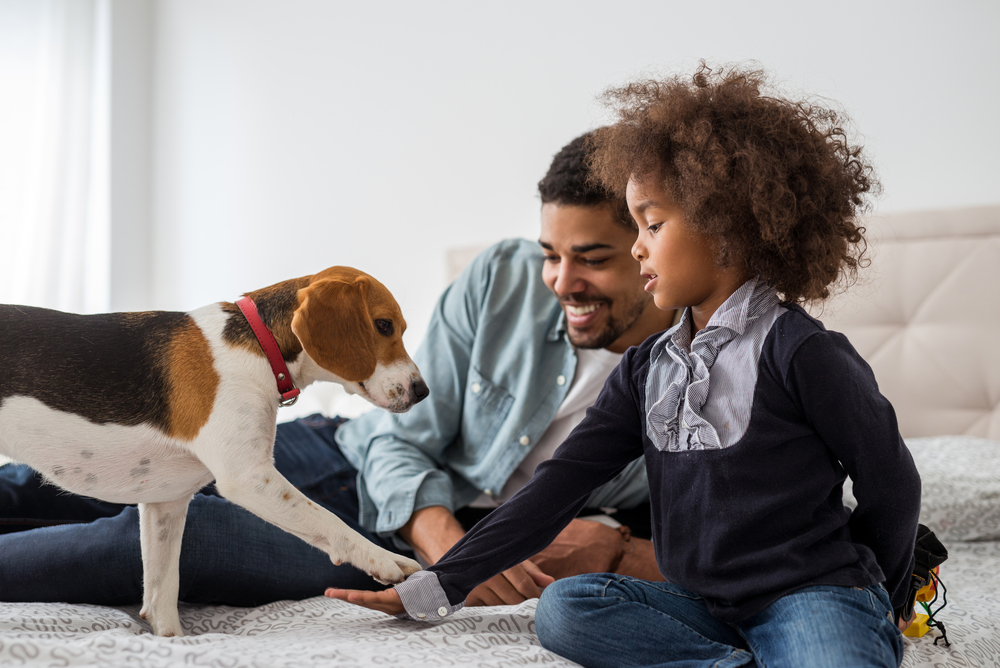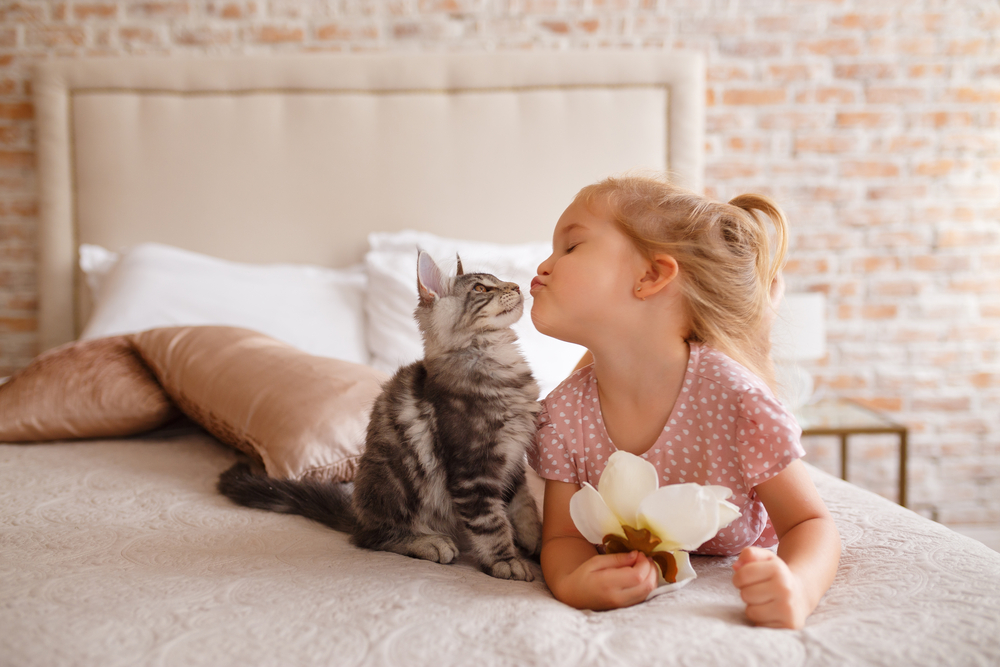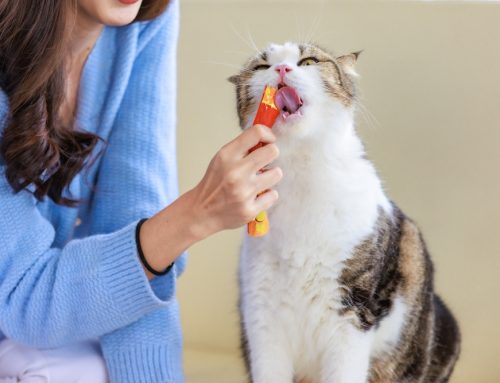Pet owners often ask us for advice and resources that will help ensure their two- and four-legged children peacefully coexist. A child’s safety is a parent’s highest priority, but your pet must also be comfortable and fear-free around children. Our team at Neighborhood Veterinary Centers of Calder understands the responsibilities of pet owners who also are parents. Even pet owners who do not have their own children need to be confident that their pet will always behave appropriately around children. So, for answers, we have gone straight to the source—a pet. Keep reading for tips from a pet on keeping children and their pets safe.
Hi there—it’s me, your pet.
Can I first take a moment to say how excited I am to finally have this platform to speak about my relationship with that tiny human who has recently joined our family? Now, I must admit, when you brought that first tiny human home, I was sure they were only visiting, but days became weeks, weeks became months, and I finally realized that the child was moving in. Now, things were easier when the child was tiny and fit in that crate you call a crib. Sure, the crying interrupted my sleep a bit, and sometimes they did not smell at all pleasant—but I could put up with that. Now, however, the baby is getting bigger and more mobile, and it’s the perfect time for us to chat.
Now, we all know that I am a really good pet. You began socializing me as a youngster, so I’ve met a few children in my day, but living with a child 24/7 is a whole different story. Don’t get me wrong—I’ve become quite fond of the little rugrat, but for the safety—and sanity—of us both, it’s time to lay down some ground rules.
Based on my observations, this child learns new things quickly, so I’m sure they will quickly absorb the important information about respecting boundaries and interacting safely, too.
Children learn by example, and modeling correct behavior is one of the best ways to teach them how to safely interact with pets. When you are intentional, calm, and gentle with me, your child will mimic that behavior. Everything is new to your child, and you need to be explicit when you teach them the rules to ensure they understand.
Here are three rules that I and my veterinary team have compiled that will ensure your child and I enjoy a safe, loving relationship:
#1: Respect a pet’s, and a child’s, personal space
Children tend to get excited about pets, and while their intentions are good, they can be a bit smothering. I’m pretty patient, but nobody enjoys being climbed on, grabbed, or turned into a human pillow. Teach your child not to climb on, squeeze, or put their face close to their pet, which can be scary. These behaviors can make a pet feel threatened, and they could lash out from fear by barking, growling, or perhaps biting. Also, pets need to know when to leave a child alone, and not take their toys, for example.
#2: Approach pets slowly and gently
Children can get pretty rambunctious, and that’s perfectly normal, but they need to be quiet, slow, calm, and gentle when they are interacting with a pet. Teach your child to always ask permission before touching any pet they don’t know, and to approach any pet slowly and gently.
- Pets should be given the opportunity to decline the invitation to be handled. You can teach your child to invite a pet over by patting their leg, which gives them the chance to opt out. If the pet doesn’t want to come, explain that this is their way of saying, “No, thank you,” but if the pet does want to be petted, teach your child to take the following steps to stay safe:
- Sniff — Show your child how to open up their hand for the dog or cat to sniff.
- Stroke — Let your child gently stroke the pet’s side, avoiding potentially sensitive areas like the ears, tail, or feet.
- Stop — Your child should pause and wait for the animal’s response to ensure they are still comfortable being petted.
#3: Supervise children and pet interactions

This rule is for you, Mom and Dad. While I have full confidence that your tiny child will soak up every lesson, you will still need to supervise them—and any child—around pets. Any occasion when pets and children are together can escalate if either side becomes unhappy, and supervision is always necessary .I hope these tips help. I wasn’t so sure about the addition to our family in the beginning, but I’ve decided we will be the best of friends and enjoy many good times and adventures together.
If you have questions or concerns, remember, you can contact my friends at Neighborhood Veterinary Centers of Calder any time.
Sincerely,
Your pet






Leave A Comment